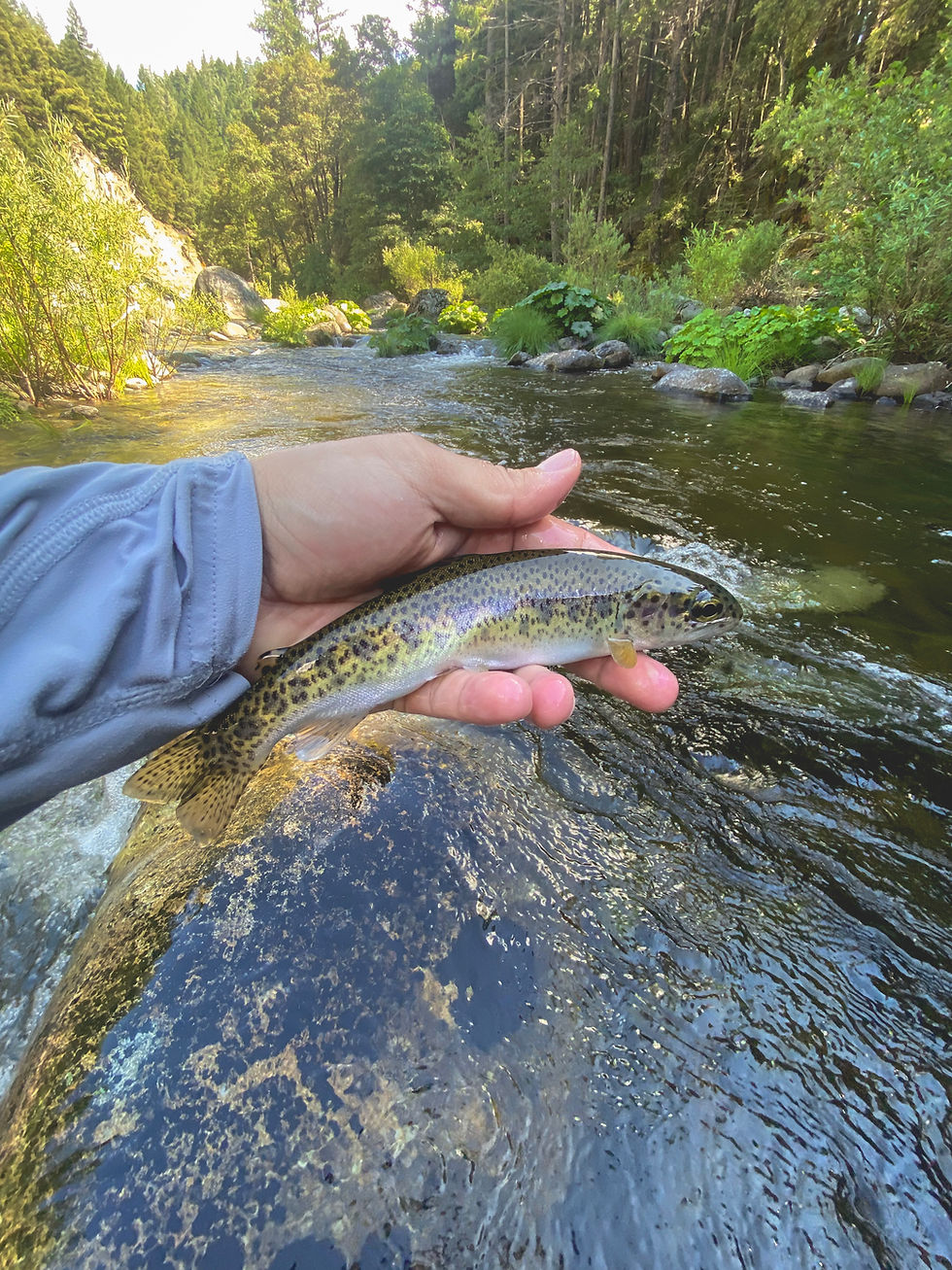The Middle Path
- M Montejano
- Jul 10, 2024
- 4 min read
The Shokuryoshi Experiment
I had been eyeing a certain stretch of river for weeks. I had visited the area several times since I found it, but every time I fished, I had explored downstream of the section that originally got me to stop.
The portion of river that ran alongside the highway was rich with pockets and pools from one bank to the other. With plenty of river access from the turnout, I always told myself I would walk downstream and fish my way up through that section, but always ran out of time before I reached this stretch.
This day was different… or, at least, a little different. I had met up with some friends for some fishing in the morning, and we ended our time fishing together just below the turnout. As we said our goodbyes, I looked upstream toward the pools. “I have time,” I thought to myself. I crept along the rocky bank near the road as I got into range to make my first cast.
A few small rainbows were plucked from the smaller pockets as I made my way upstream and toward the center of the river. There was a mass of boulders that settled just below a thin patch of sediment that was protruding out of the water. That’s where I wanted to be.
As I climbed up onto the boulder at the tail of the cluster, I noticed the sun was starting to move behind the western ridge. A shadow was cast across the river, right up to the edge of the little island that divided it in two. The contrast in the light offered a fun new experience for myself, as well as an opportunity to see and learn how big of a difference the lighting can make.
To the left of my position were several pools bathed in sunlight. The furthest downstream was a relatively shallow, round pool. This was fed by a longer pool with the current creating some disruption on the surface. At the head of the island was a large glide that was slightly obstructed by a log jammed against a large boulder about twenty feet from the point of the island.
In the shadows on the right side was a large, flat boulder that sat parallel to the small pool at the foot of the island on the left side. The boulder occupied the space at the tail-out of a slower-moving stretch that wrapped around the lower half of the island. Above that, a few more shallow pockets divided the bottom half from the glide that fed the two divided sections.
I sat, crouched on a boulder, planning my movement. I would move a little to the left to be able to cast into the first round pool, then to the boulder on the right. This would lead me to the island where I would alternate between the two sides as I worked my way up to the glide above. I moved into position and made my first cast to the left.
While there were no bites in that first pool, I took time to observe the short stretch just above the boulder on the opposite side. There were numerous splashes from rising fish all throughout the pool. From my position I made a few casts, placing the kebari just upstream of the boulder. Almost as soon as the second cast landed the fly on the surface, I hooked into a little rainbow.
I climbed my way on top of the flat rock, and with several more casts, brought a few more rainbows to the net as I waddled up to where I would cross onto the island.

As I stepped onto the island, I made several casts to the left side. Starting in the shallows closest to me, I fanned my casts outwards toward the tail-out of the larger pool. There I hooked into one rainbow close to where the current tumbled over the rocks and into the small pocket below. Other than that, the action was minimal. I set my sights back to the shaded side and landed a few more rainbows from the middle of the stretch as I continued along the path.
Getting closer to the center point of the island, a thought crossed my mind. It seemed odd that there would be fish only on one side and not the other. The left side offered plenty, if not more, cover and hiding spots for fish than the right did. But, it was clear that the right side was experiencing a hatch that had started as the shadow cast by the ridge cooled the air and water on that side. I decided to change my approach, and how I presented the fly to the sunny side of the river.
I started focusing my casts further upstream from my position, dropping the kebari into the current that fed the pool, and allowing for it to sink further in. As I drifted my futsu through the center I felt a bump, and missed the hookset. With some persistence in repeating the drift, I was able to hook and land a few rainbows out of the large pool on the left. These were the two largest fish caught in this section. Their presence was hidden under the veil created by disruption on the surface.
It was starting to make sense, and using what I just learned, I made a few more casts to the far side of the flows, and landed another.
As I worked my way up to fish the remaining water within reach of the island, I continued to tailor my cast and presentation to the fish on either side of the island. Soft, surface presentations in the shade on the right - a more intentional plop into the current, and letting it drift lower in the column on the left.

